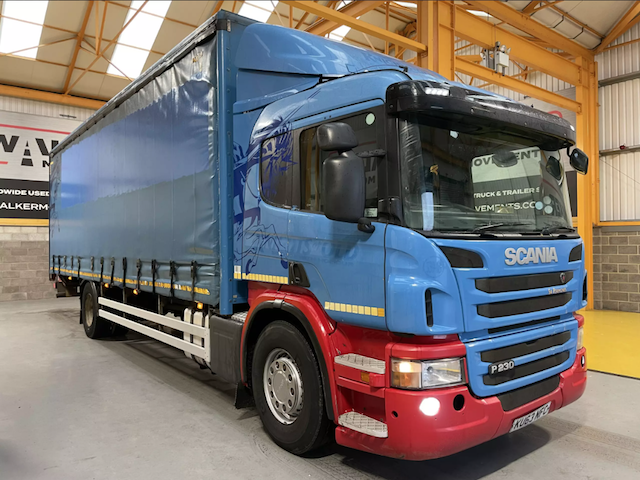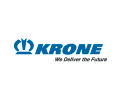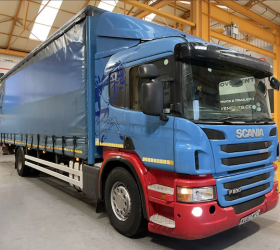The temporary cut to Fuel Duty is due to expire in March. The government has said nothing about extending it. Businesses with fuel vehicles should therefore expect their fuel expenses to go up from the end of March. There may, however, be ways for businesses to reduce their fleet expenses in other ways. Here are some ideas to consider. To explain further, Andrea Easton, Head of Finance and Operations at Walker Movements, shares her insight into how you can cut fleet expenses in 2023.

Review your fleet-management process
Start from the top. Look at how you are currently managing your fleet. Actively check if there are any ways you can optimise it further. Remember, even small improvements can add up to substantial savings over time.
In particular, look for ways to use technology to improve your operations. For example, are there apps you can use to streamline administrative processes? Simple tasks such as basic record-keeping are often ripe for automation. Could you use technology to improve your route-management process?
Implement preventative maintenance
This tip is probably well-known but it’s worth repeating. A stitch in time really does save nine. Preventative maintenance really does reduce the risk of unscheduled repairs and their associated unplanned downtime.
Leverage telematics
If you’re not already using telematics in your vehicles, then you almost certainly should be. If you are, then you should be ensuring that you’re making the most of them. There are numerous uses for telematics. If, however, you’re specifically looking for ways to cut your fleet expenses, then the key metric to check is idling time.
Idling time means that your vehicle is in active use. In other words, the engine/battery is running. It is, however, not actually going anywhere. There are legitimate reasons why a vehicle might be idle. Probably the most common one is so a driver can pull away as soon as a passenger is belted up. It should, however, be kept to a bare minimum.
If your telematics show you a recurring pattern of idling, then you need to investigate it. It may be a sign that you need to review your route planning and/or scheduling. You might also want to check for times when vehicles are listed as in use but not moving or idling.
Again, there are legitimate reasons for this, e.g., drivers’ breaks. Again, however, it can also be an indicator of issues with your routing and/or scheduling.
Maximise your fuel (power) efficiency
There are three main ways you can increase your fuel (power) efficiency. What’s more, two of them can be implemented at very little cost.
The one that does require upfront investment is making your vehicles more fuel efficient. This can, however, often be done on a step-by-step basis. For example, when you’re replacing tyres anyway, use low rolling-resistance ones.
The two that only cost a bit of your drivers’ time are cleaning out your vehicles and fuel-efficient driving.
The importance of cleaning-out vehicles
Like private cars, fleet cars can easily become mobile storage units. This is fine if the items are regularly being used. If they’re not, however, they just add extra weight. That translates into extra fuel. Encourage your drivers to check their vehicles regularly and clean out unnecessary items.
Additionally, make sure your drivers understand and apply the principles of effective loading. Essentially, the weight needs to be centred as much as possible. This means that items need to be in containers and/or secured to keep them in place.
The main reason this is important is for safety. Correct loading will, however, also improve how a vehicle handles. This will directly impact its fuel consumption and hence its running costs.
It’s also worth noting that the less you keep in a vehicle, the less exposed you are, if it is targeted by criminals. Ideally, anything that does need to be kept in a vehicle should be kept out of sight, particularly if it’s valuable. If it’s too big to go in the glove compartment, put it in a container or under a cover.
The basics of fuel-efficient driving
Fuel-efficient driving essentially means driving in a way that maintains a consistent speed and direction as much as possible. When you do have to change speed or direction, you should aim to transition into it rather than do it suddenly.
Implementing fuel-efficient driving should not have any impact on journey times. It will, however, save both fuel and wear and tear on your vehicles.
It can also help you to save on unplanned repairs and insurance premiums. This is because fuel-efficient driving is a very safe approach to driving.
Review your parking protocols
Parked cars have long been targets for criminals. Right now, they are particularly at risk. There are two main reasons for this. One is the general economic climate. The other is the issues with the automotive supply chain. This means that vehicles can be targeted for their parts rather than in their entirety or for their contents.
Check your routing and scheduling to ensure that you’re doing everything you can to reduce the need for drivers to leave your fleet vehicles unattended. Try to arrange your routes and schedules so that drivers who do need to leave their vehicles unattended can do so safely. If they need to pay for parking, make sure there is an effortless way for them to do so.
Additionally, be aware that keyless vehicles are particularly vulnerable to thieves. You may wish to consider turning off keyless entry. If this is a step too far, you could try putting your access fob in a protective case. You should definitely use additional security devices such as steering wheel locks. Keep in mind, however, that these can be removed if thieves have enough time.
Actively look for the best deals with the vendors you use
The obvious example here is insurance. Make sure you give yourself plenty of time to research a new deal when your policy comes up for renewal. You might also want to consider using an insurance broker.
Fuel and/or EV charging can also be places to look for savings. If your drivers just buy fuel as they need it, consider joining a fuel scheme. For EVs, make sure your drivers start them up connected to the mains if at all possible. This helps to preserve the power in the battery. It, therefore, minimises the likelihood of them having to use a public charger.


.gif?rand=1505)









